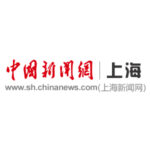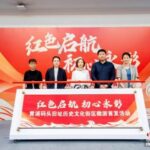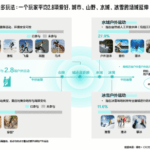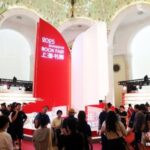On the occasion of the 40th anniversary of the Shanghai Overseas Friendship Association, we extend a sincere invitation to all members at home and abroad to collectively write a chapter of shared memories belonging to the strivers, builders, and dreamers. These stories contain the sweat shed in serving Shanghai’s reform and development, the bridges built through cultural exchanges between China and other countries, and the sincere dedication of compatriots at home and abroad working hand in hand to draw up blueprints for development. They are not only the intertwined growth trajectories of individuals and the city but also vivid reflections of the Association’s mission and responsibilities. With the theme “My Story with Shanghai,” we invite you to open this collective scroll full of memories and warmth, letting forty years of memorable times flow through pen and ink, and letting every loyal heart resonate through words.
Connecting with the Association, A Legacy Across Generations
On the joyous occasion of the Association’s 40th anniversary, I reflect on the profound connection my family has shared with the esteemed Association across four generations.
Predecessors Contributed to National Development Through Industry and Helped Establish the Association
In 1979, amid China’s reform and opening-up, a delegation from the Shanghai industrial and commercial circles visited Hong Kong. At that time, a representative from the Hong Kong industrial and commercial circles worked extensively with his father to dispel the concerns of Hong Kong businesspeople and promote economic cooperation between Shanghai and Hong Kong.
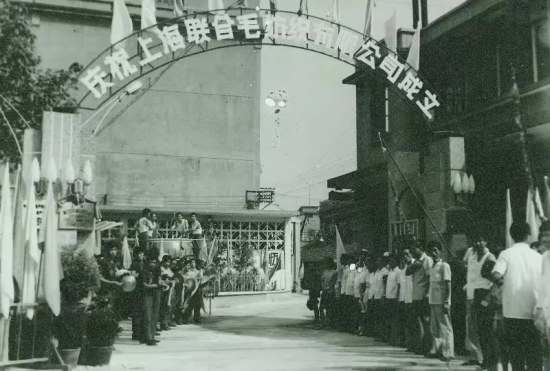
In 1981, he took the lead in establishing the “Shanghai United Woolen Textile Co., Ltd.”, which received business license “Shanghai No. 00001” from the State Administration for Industry and Commerce, making it Shanghai’s first joint venture between Shanghai and Hong Kong. At his suggestion, the Shanghai-Hong Kong Economic Development Association (now the Shanghai-Hong Kong United Association) was established in both Hong Kong and Shanghai, with him serving as its first president.
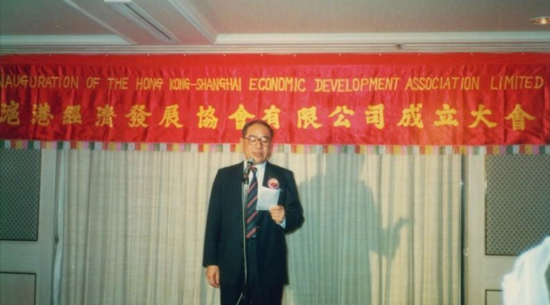
Around the same time, the Shanghai Overseas Friendship Association was born, and the Shanghai-Hong Kong Economic Development Association naturally became an important member, with him subsequently serving as a standing council member. He actively participated in overseas friendship activities, initiated the “Forum on External Cooperation,” and encouraged other industrialists from Hong Kong and Macao to come to Shanghai to introduce the “land lease” mechanism, promoting the development of Shanghai’s real estate industry. Subsequently, the Shanghai-Hong Kong Economic Development Association organized visits to Shanghai by elites from Hong Kong’s economic sector to provide suggestions to relevant departments. The success of these activities should be credited to the platform built by the Association.
Promoting Cultural Integration and Advancing the Association’s Development
The next generation further promoted cultural integration between Shanghai and Hong Kong. As the Chairman of the Board of the West Kowloon Cultural District Authority in Hong Kong, he expanded his vision to the Yangtze River Delta region, holding various significant cultural exchange events in Shanghai, Nanjing, Suzhou, Wuxi, and Changzhou, and providing suggestions to local governments.
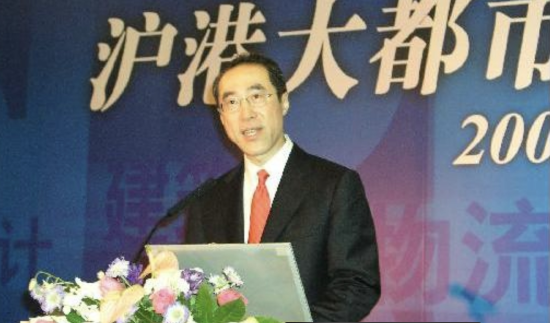
In 2013, he assumed the role of Chairman of the Board of a Shanghai education foundation, focusing on closely aligning philanthropic endeavors with the Association’s goals and primarily promoting cultural cooperation and exchange activities between Shanghai and Hong Kong. In 2023, in close cooperation with the Association, a centenary memorial seminar was held, themed “Patriotism, Love for Hong Kong, Serving the Nation Through Industry,” which received high praise from Shanghai’s leadership. In 2024, funds for Shanghai-Hong Kong dual-city cultural cooperation and exchange were established at Shanghai University, and a fund for AI-enabled Shanghai-Hong Kong urban governance was set up at Shanghai Jiao Tong University, receiving policy and resource support from the Association and also becoming a window for the Association’s external exchanges. In 2025, the West Kowloon Cultural Week was successfully brought to Shanghai as its first stop, featuring the major exhibition “I.M. Pei: Life is Architecture” and the Cantonese musical “The Great Counsel,” which were warmly received by Shanghai citizens. Additionally, comparative studies on Shanghai and Hong Kong culture, a global youth cultural experience camp, and


